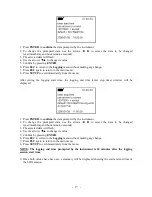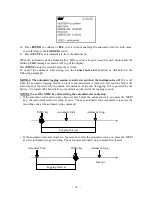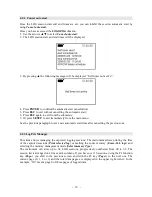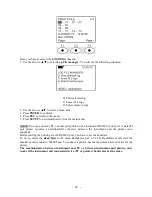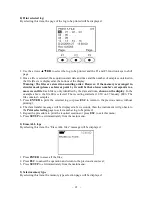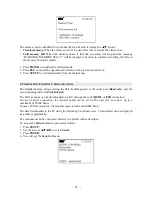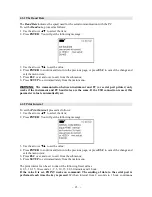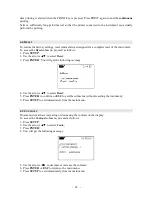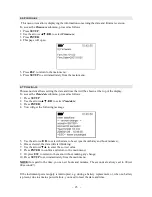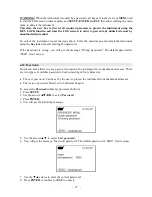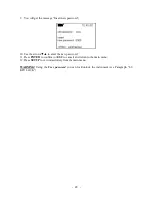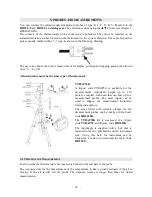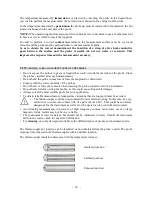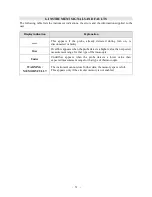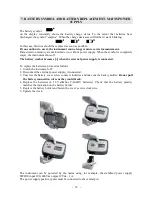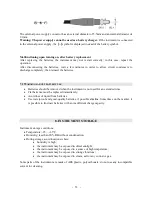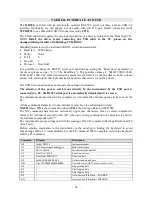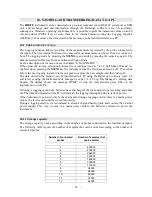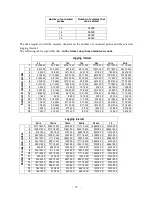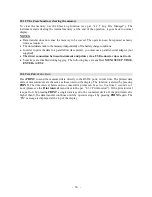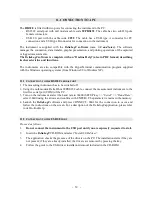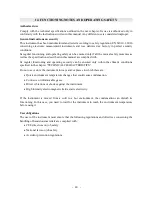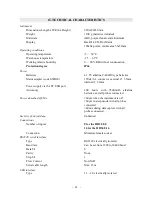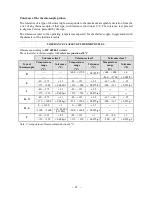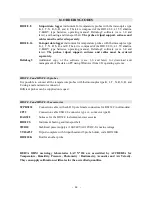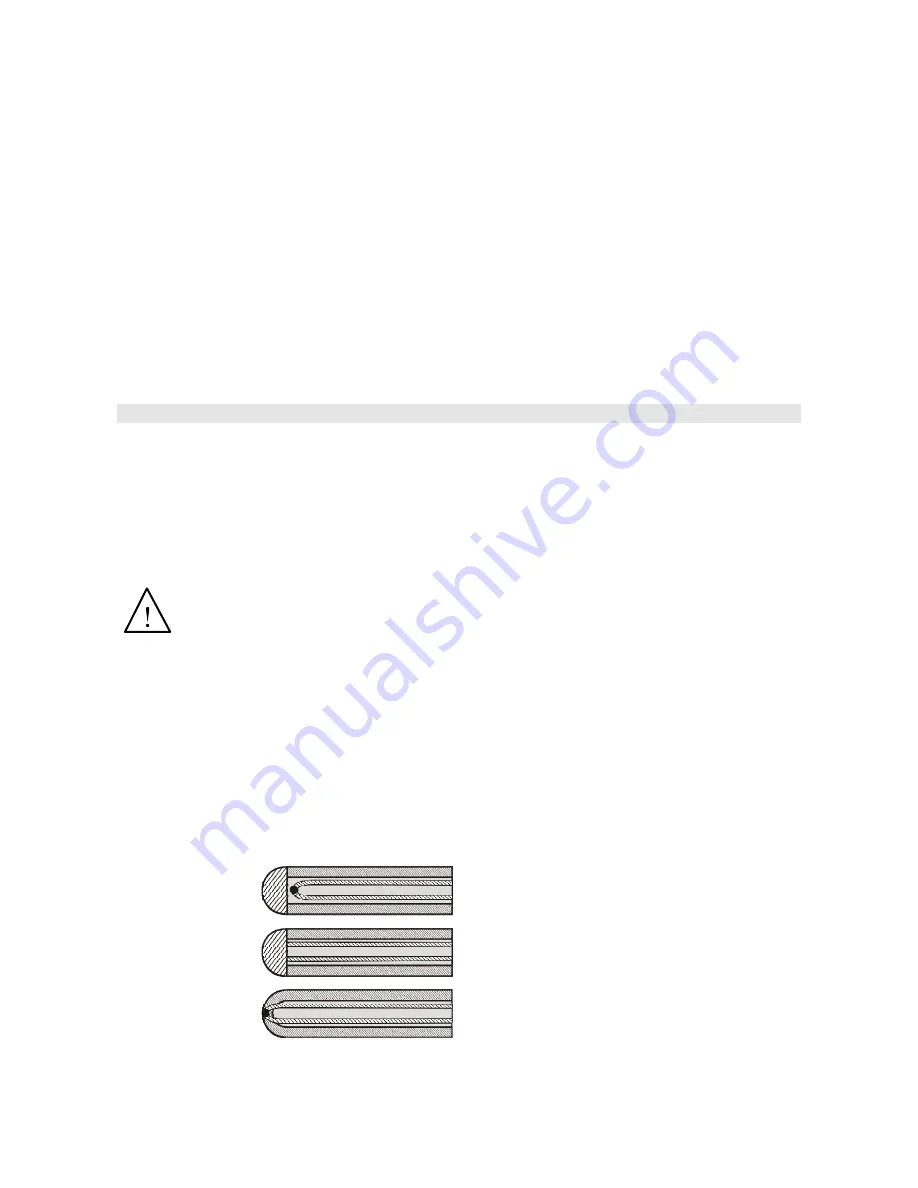
- 30 -
The temperature measured by
immersion
is carried out by inserting the probe in the liquid where
you wish to perform the measurement; the hot junction is housed in the end part of the probe.
In the temperature measured by
penetration
the probe tip must be inserted into the material; the hot
junction is housed in the end part of the probe.
NOTE:
When measuring the temperature on frozen blocks it is convenient to use a mechanical tool
to bore a cavity in which to insert the tip probe.
In order to perform a correct
contact
measurement, the measurement surface must be even and
smooth, and the probe must be perpendicular to the measurement plane.
So as to obtain the correct measurement, the insertion of a drop of oil or heat-conductive
paste between the surface and the probe is useful (do not use water or solvents). This
improves the response time and the measurement accuracy.
5.2
W
ARNINGS
,
CARE AND MAINTENANCE OF THE PROBES
•
Do not expose the probes to gases or liquids that could corrode the material of the probe. Clean
the probes carefully after each measurement.
•
Do not bend the probe connectors or force them upward or downward.
•
Comply with the correct polarity of the probes.
•
Do not bend or force the contacts when inserting the probe connector into the instrument.
•
Do not bend, deform or drop the probes, as this could cause irreparable damage.
•
Always select the most suitable probe for your application.
•
To obtain reliable measurements, temperature variations that are too rapid must be avoided.
•
The thermocouple could be non-insulated from its external casing. In this case, be very
careful not to come into contact with live parts (above 48V). This could be extremely
dangerous for the instrument as well as for the operator, who could be electrocuted.
•
Avoid taking measurements in presence of high frequency sources, microwave ovens or large
magnetic fields; results may not be very reliable.
•
The instrument is water resistant, but should not be immersed in water. Should the instrument
fall into the water, check for any water infiltration.
•
For
cleaning
, use only detergents suitable to the different types of probes and instrument parts.
The thermocouple hot junction can be insulated or non-insulated from the probe’s earth. The probe
response time is faster in the thermocouples with an earthed junction.
The thermocouple insulation decreases with the temperature increase.
Insulated junction.
Earthed junction.
Exposed junction.


